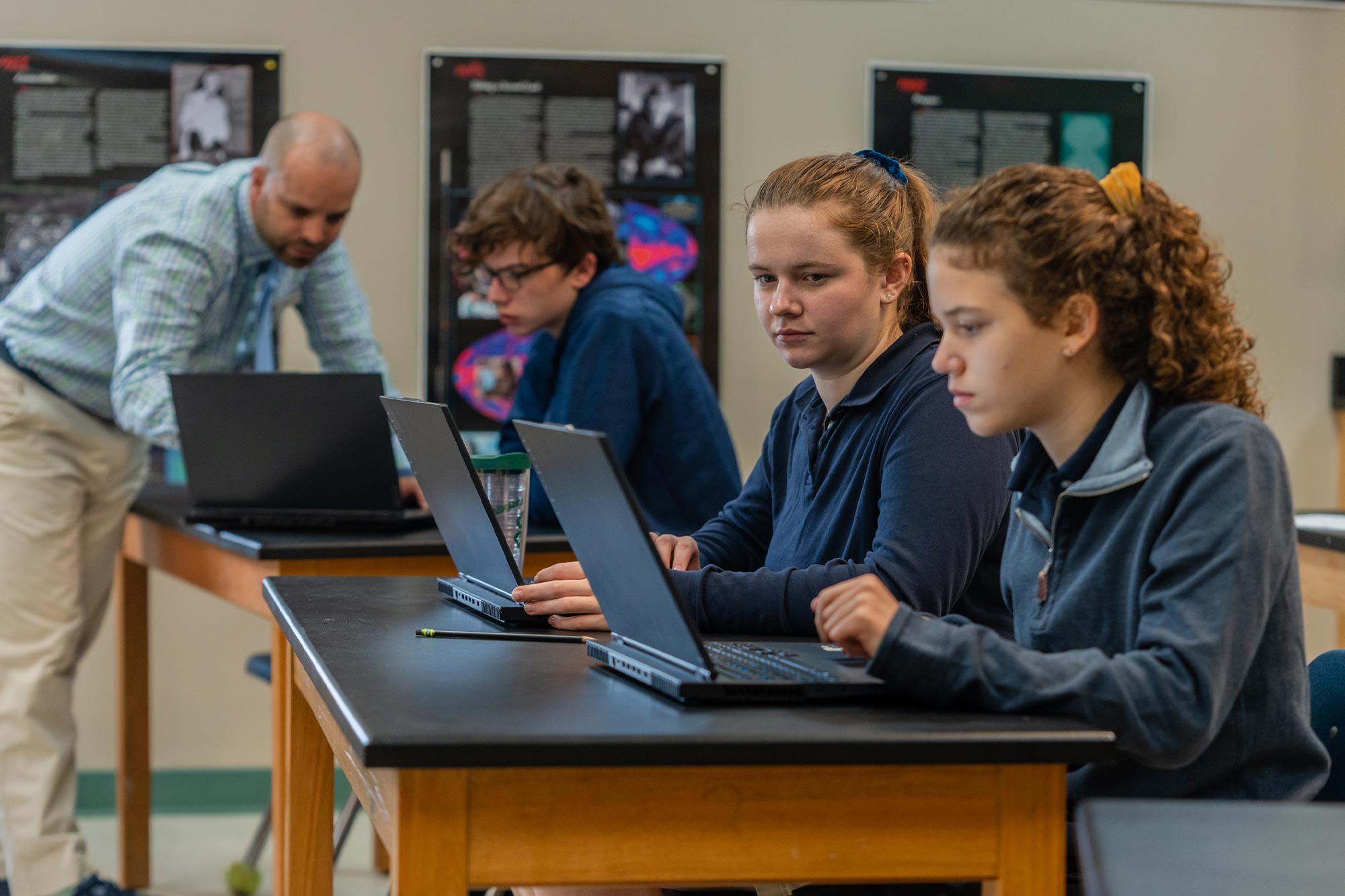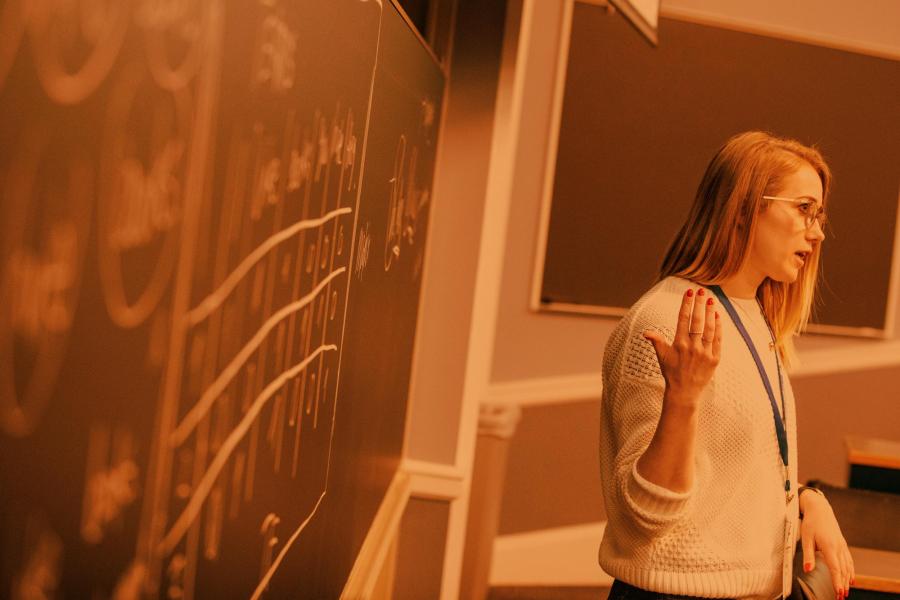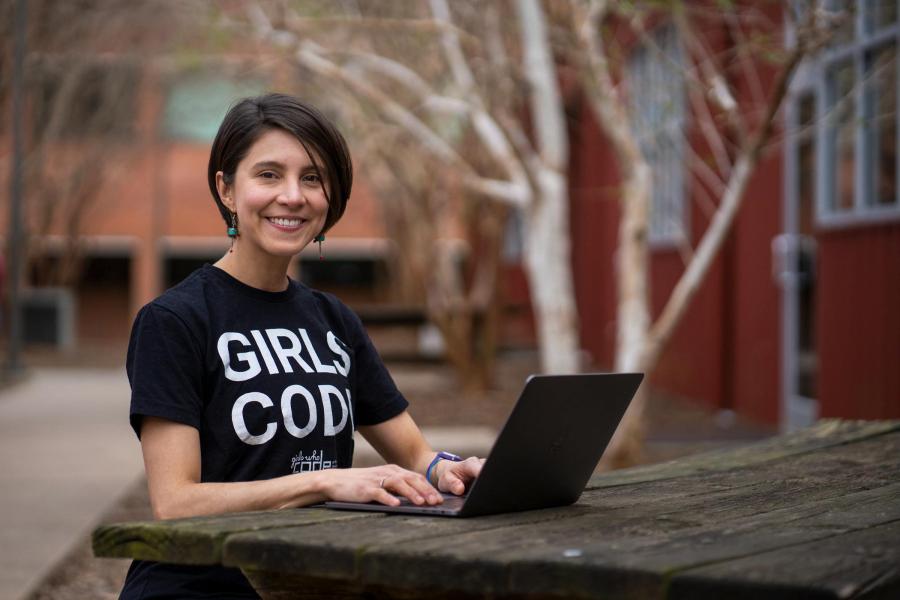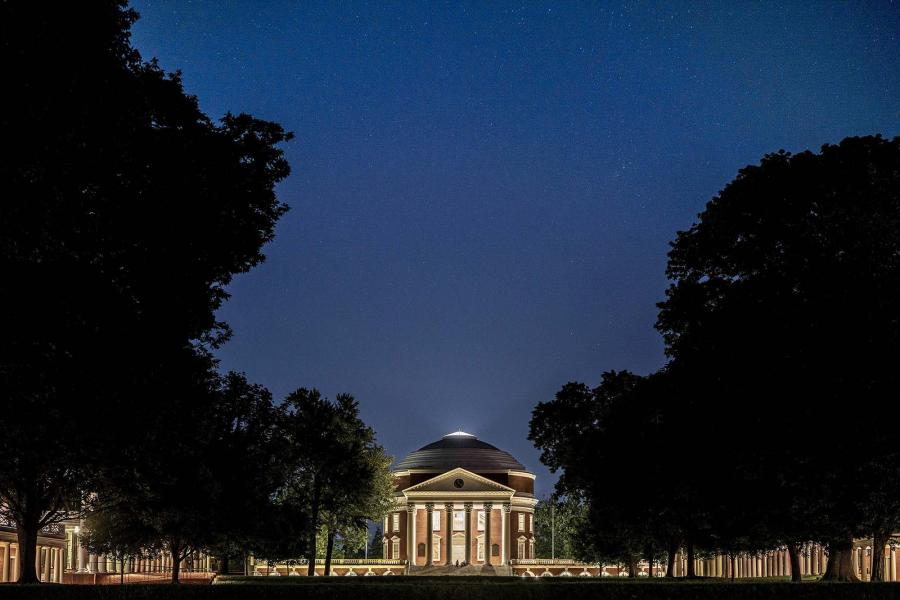Ordinarily, the borrowed high school classroom is dedicated to planetary and stellar science. Still, a question on the wall might apply to the new elective being taught: “What characteristics permit us to analyze and understand the design of the universe?”
The subject is data science. And since data underlies everything, it’s a course with a lot of options – both in the nature of what can be explored, and how.
“If ‘run all’ doesn’t work for you, you can also do this …,” Matt Dakolios tells the small collection of uniformed high school students who raptly work with him to code and solve the problem at hand.
Dakolios, formerly an award-winning high school math teacher, decided to switch careers in his mid-30s. He pursued a master’s in the University of Virginia’s School of Data Science, and when he completed the degree in December of last year, he landed a job as a data scientist with Crutchfield Corp., a major home electronics retailer.
So what’s he doing teaching a class back at his old employer, The Covenant School in Charlottesville?
Dakolios had learned that one of his UVA instructors, Adam Tashman, an associate data science professor who previously co-directed the online master’s program, had joined a Virginia Department of Education task force to make recommendations for the future of K-12 math instruction – with teaching data science being high on the list.
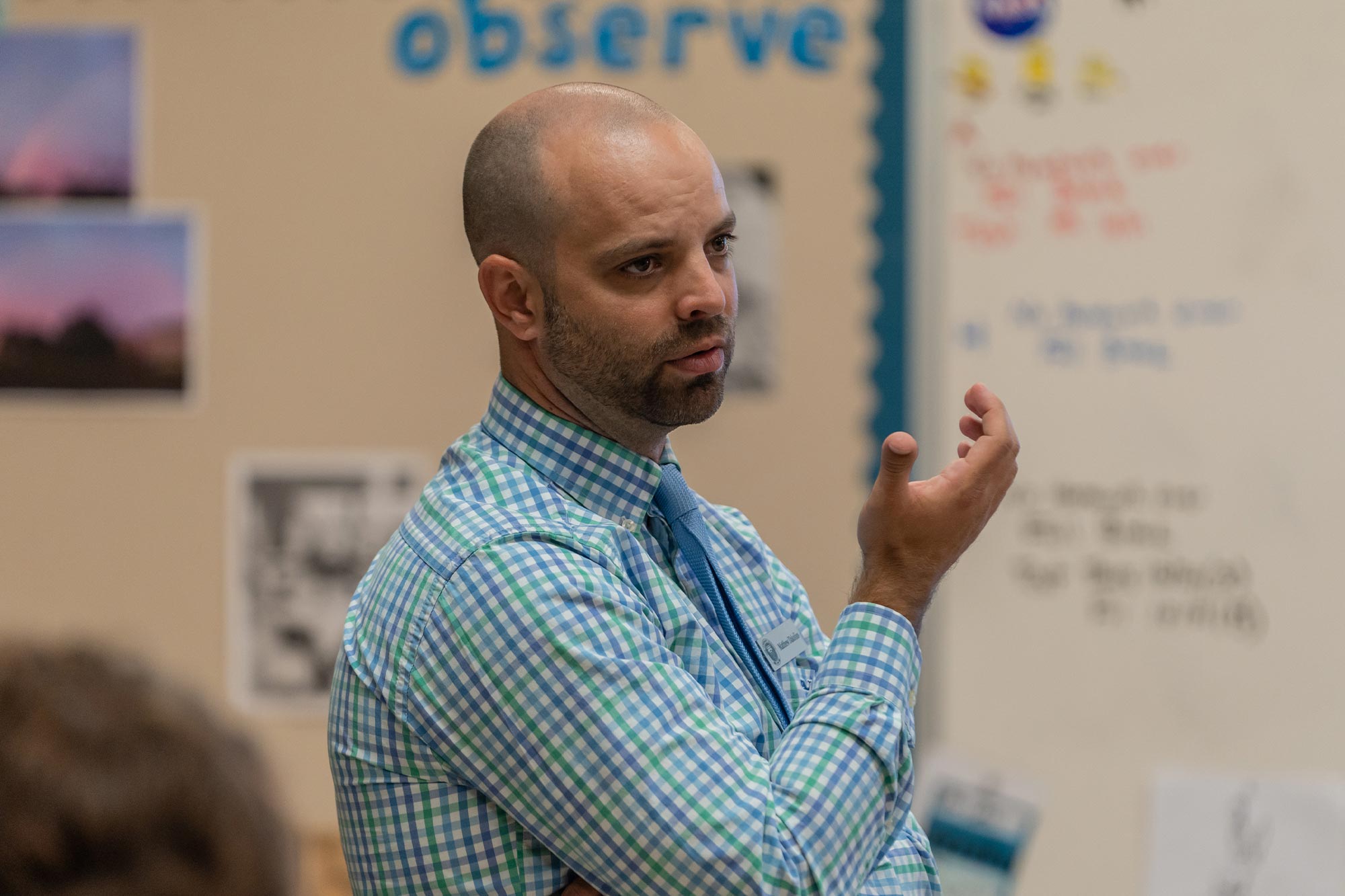
Dakolios returned to the classroom after realizing he could help pilot data science education in Virginia schools.
“I got the urge to get involved when I read the article in UVA Today with Dr. Tashman talking about the curriculum initiative with the state of Virginia,” Dakolios said. “And so it’s just kind of a perfect marriage that fell into place, because I have the high school teaching experience and just earned a master’s in data science.”
He reached out to Tashman, and together they built a pilot high school data science course.
“For students to even consider data science, they have to first have an understanding of what it is, in order to give that field a fighting chance,” Dakolios said.
Putting Money Where Their Math Is
Covenant prides itself on its math offerings, he said, with Upper School head Colin Anderson being “a phenomenal former calculus teacher, and very much pro-technology and pro-innovation.”
Dakolios pitched the data science course he and Tashman created to Anderson, who was more than willing to pilot it at Covenant this fall. With permission from Crutchfield to take a break in his database management responsibilities for two hours a week, the new course was born – now among only a few data science offerings currently being tried with high-schoolers in the state.
Nine students – five seniors, three sophomores and a freshman – ultimately stepped up for the challenge at Covenant. There were no prerequisites for the elective other than interest, Dakolios said. It was assumed that they all had Algebra II by that point, however.
“They have a knowledge of linear algebraic functions, which is helpful, because we will eventually build a linear regression model at the end of the course,” he said.
For those readers scratching their heads, a “linear progression model” tracks data over time to see if there is a strong or weak correlation, in the interest of making predictions. The prognostication could range from the likelihood a kicker will score the winning field goal in the Super Bowl to the chances of whether a stock will tank.
Using Data to Game Out Possibilities
On a recent fall day, Dakolios’ students picked apart an iris – not the physical flower, but a dataset of open-source statistics about the flower.
Dakolios keyed in students’ instructions using Python code, and as a group they investigated how the data correlates. For example, is there a strong relationship between the length of the petals and the sepals that surround them? (The answer: Yes, they are highly correlated.)
As the students build their foundational knowledge, they will work in small groups to come up with their own prediction machines.
Three of the four groups are working on video game-centered projects – who will win the next big online gaming competition and how well a new game will sell are two of the queries – while the fourth group is focused on predicting GPAs.
“For students to even consider data science, they have to first have an understanding of what it is, in order to give that field a fighting chance.”
Over the next three months, the students will learn the principles of statistics, basic coding and anything else they need to bootstrap their data “pipelines” into useful tools.
The projects are set to conclude in December with group presentations.
For Nathan Klintworth, a senior who applied to UVA within the past week, the course is already making a difference in terms of his ever-refining career focus.
“I’ve been pretty set for most of my life on my first choice of a career, math professor, but this class has made me realize that data science would also be a good career option,” Klintworth said. “I am very interested in the idea of using math to help solve real-world issues, and data science seems to be a field in high demand nowadays. I will definitely want to continue learning more and taking classes about it in college.”
Senior Josie Laugelli also plans to apply to UVA. She said the class has been valuable in demonstrating ways to extract meaning from raw information, even if data science probably won’t be her path.
“I love the approach that this class takes with teaching various concepts, trying them on our own and talking about how they can be applied to the analysis of data,” Laugelli said.
Though she’s more interested in engineering and architecture, “I will keep my mind open.”
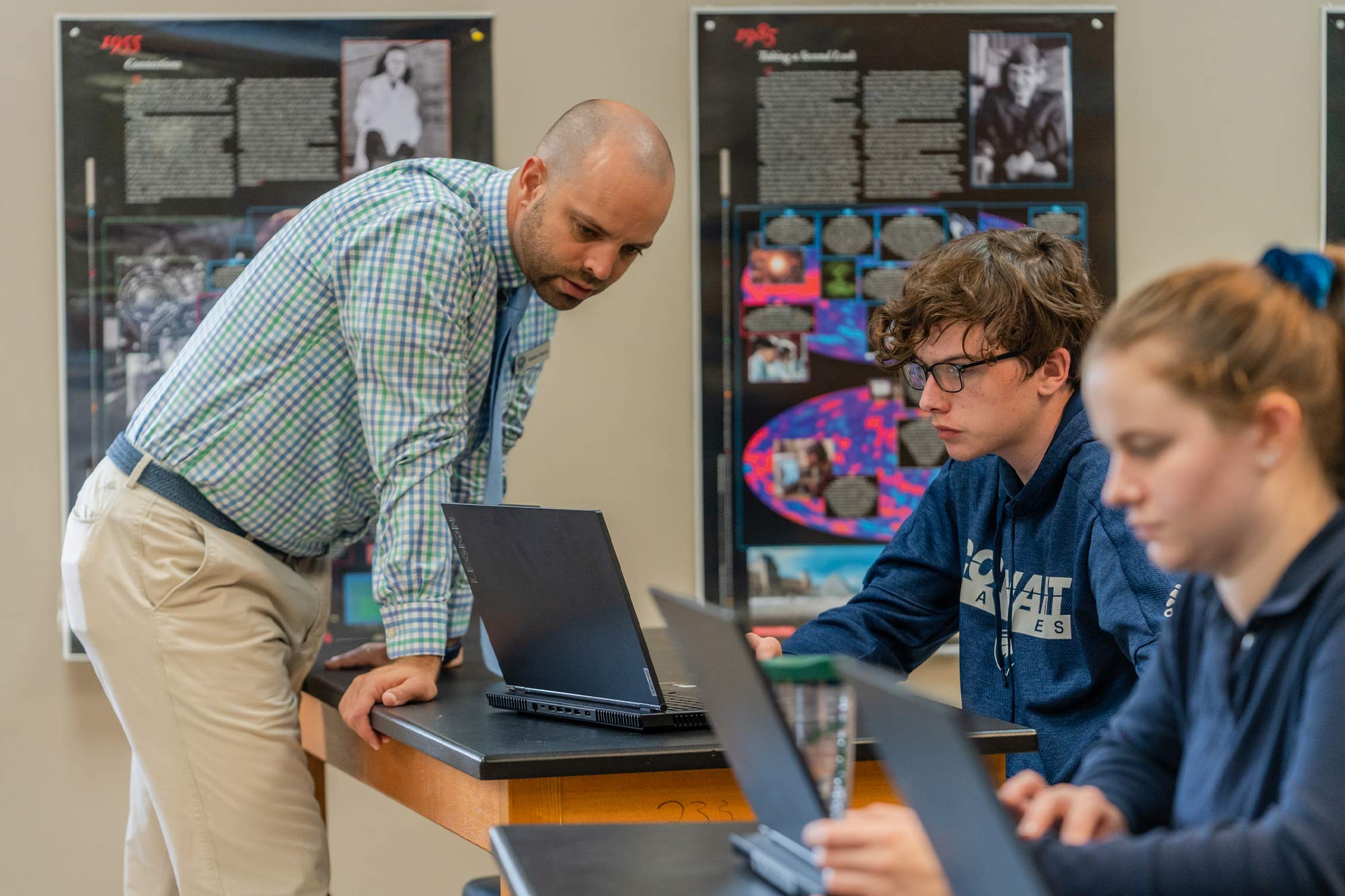
One of the many aspects that makes data science attractive to him, Dakolios said, is that “if you don’t know something, you just look it up and it’s there.”
Borrowing From the Past, Trying Something New
Dakolios freely admits he borrowed heavily from his UVA mentors’ courses, with permission. He specifically credits Practice and Application in Data Science, which is taught by Rafael Alvarado, an associate professor who directs the residential master’s program. But he gives overall credit to Tashman for envisioning and building the course.
Both professors provided Dakolios with structures and insights that made his teaching a quick reality.
“I went back through old notebooks and said, ‘OK, how did we build a pipeline in that course?’ And then, ‘How can we make it similar, but on a high school level?’”
Currently, the Covenant students are journaling about their learning experience, which will give Tashman some raw feedback he may use in his recommendations to the state for a more formalized data science course structure.
Everyone involved in the process is learning something new, said Dakolios, who is a former South Carolina Independent Schools Teacher of the Year. In addition to his master’s in data science, he earned a master’s in higher education/higher ed administration at UVA, in 2009.
“In many ways, I was an expert at what I was teaching before; I was teaching statistics and calculus, and had been doing it for a long time. It was very, very comfortable. I could just walk in and teach a lesson,” Dakolios said. “And so this is something new, where I know enough to teach this course, certainly, and I feel like I’m well-prepared. But I’m going from learning a new field, and then just two years later, teaching it to high school students.”
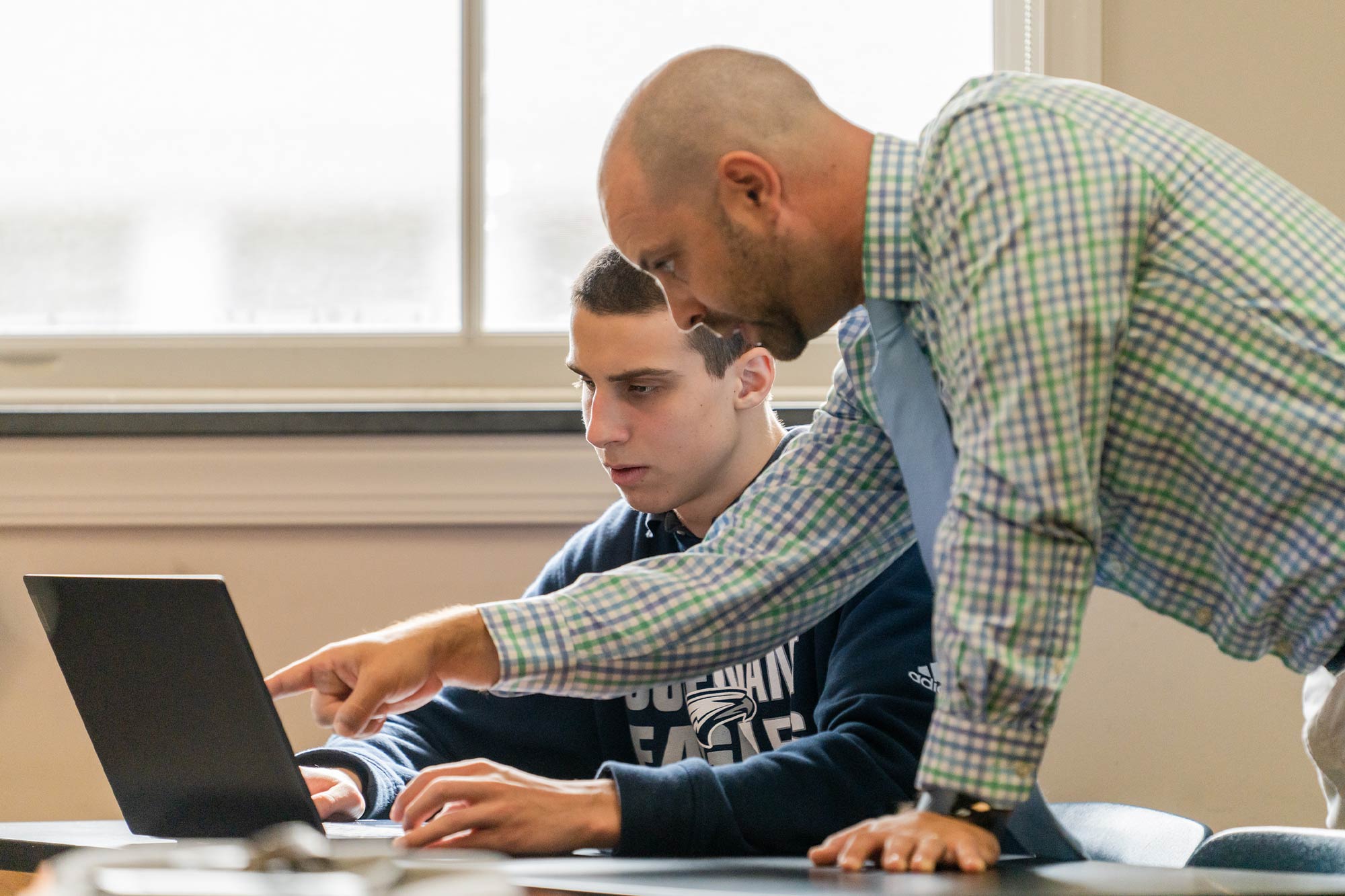
Dakolios talks to Owen Lewis, one of the nine students in the elective course.
But one of the many aspects that makes data science attractive to him, he said, is that “if you don’t know something, you just look it up and it’s there.”
“Troubleshooting and doing your own research is paramount in this field,” he continued. “And so I think that that’s going to be important for me as the teacher to say, ‘Oh, I haven’t seen this error before. Let’s look it up together.’”
Dakolios said despite his ongoing ties to Covenant that include having daughters in its elementary school, he isn’t sure how much longer he’ll be able to teach the course, simply because his primary job comes first. Still, he’s enjoying the unexpected extension of his teaching career while it lasts.
“I’m an extrovert, so I get my energy from the students and being back in the classroom,” he said.
In the meantime, Tashman and others in the School of Data Science are actively seeking both private- and public-school teachers who may have an interest to preparing the next generation for careers in data science. For information, contact datascience@virginia.edu.
Media Contact
Communications Manager School of Engineering and Applied Science
williamson@virginia.edu (434) 924-1321
Article Information
July 18, 2025

